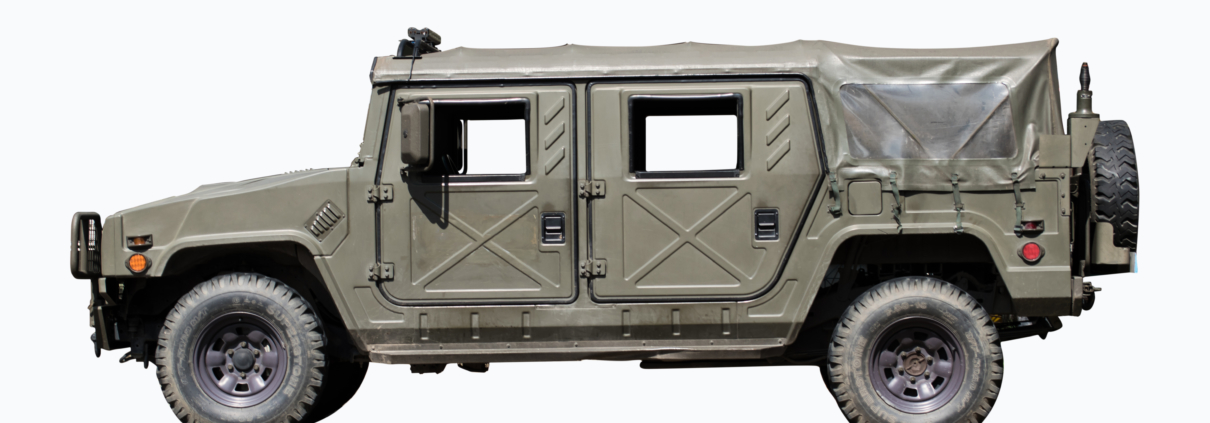Can Activision use Humvees in Call of Duty? An important decision for video games industry
![]()
The video games industry has had a troublesome relationship with the arms industry for quite some time. Companies like Electronic Arts or Activision Blizzard used to get into license agreements with gun manufacturers and include special thanks to them in game credits, which sparked controversies connected with the American debate on gun violence. At least from 2013, EA stopped entering into licenses with gun manufacturers, however it emphasised that it still has a right and intention to use them. Around the same time, EA has settled its case with the makers of Bell Helicopters regarding the use of the their machines in the Battlefield 3, where it held that the US Constitution’s First Amendment gives it a right to depict these machines in the game without obtaining licenses.
Last week (on March 31st), United States District Court for the Southern District of New York has issued a decision which confirms the view held by EA, however in a case involving another big publisher – Activision Blizzard. Almost three years ago, Activision has been sued by AM General, the manufacturer of the iconic military vehicle – the Humvee. AM General has asserted that Activision has used the Humvee without its permission in several Call of Duty titles, which meant it infringed upon AM General’s intellectual property rights. As it now turns out, it did not.
In short, the court has decided that because the use of the Humvee in the Call of Duty franchise has an artistic purpose, the First Amendment’s freedom of speech prevails over the trademark rights granted to the Humvee manufacturer. It has also compared the use of trademarked goods in video games to such use in other works of art, such as movies.
In its analysis, the court has applied the two-pronged standard test introduced in the Rogers v. Grimaldi case for the use of trademarks in works of art. Under the first prong of the Rogers test, court had to decide whether the use of the trademark has any „artistic relevance to the underlying work whatsoever”. The court said that it does, as Call of Duty games aim to provide players with a sense of realism, and featuring real-life military vehicle certainly helps that.
Under the second prong of Rogers test, the court had to analyse whether the use „explicitly misleads as to the source of the content of the work”. To decide this issue, the judge applied another standard test – eight-factor Polaroid test. Once again, the court sided with Activision stating that the use of Humvees in the games is not explicitly misleading. Although the strength of Humvee mark weighed in plaintiff’s favor, Activision prevailed regarding all other seven factors. AM General failed to prove that the consumers may confuse its’ products with Activision products. The judge has also pointed out that Call of Duty is not a product which competes with AM General’s products. Activision’s clients are consumers, whereas Humvees are addressed and sold mainly to armies.
According to a survey conducted by AM General, only 16% of consumers were confused as to the AM General’s association with Call of Duty. As the judge stated in the decision, “less than 20 percent confusion regarding two companies’ ‘association’… is at most some confusion”, not compelling enough to say there has been an infringement. Judge has also invoked the case regarding the use of a knockoff Louis Vuitton bag in the Hangover II movie, where it has been said that “moviegoers are sophisticated enough to know that the mere presence of a brand name in a film, especially one that is briefly and intermittently shown, does not indicate the brand sponsored the movie”. As the judge said, „there is no reason to believe that video game players are any less astute”.
As a result, the decision stated that the use of Humvees was legitimate. It was artistic in nature, because it enhanced the games’ realism, and the „realism can have artistic merit in itself”. There is also no substantial confusion as to the source the marks depicted in Call of Duty games. In a case of moderate risk of confusion, the First Amendment rights prevail.
Although it does not create any precedent, the US District Court decision is a great win for the video games industry. It is an important example of how to apply the Rogers test and how video games in the United States earn the same status as works of art as books, games or movies, in case of which you do not need to ask for a permission if you want to briefly show the trademarked product. The decision also shows that the First Amendment once again proves to be a very powerful tool in protecting the artistic expression in the USA. It is interesting to briefly consider how the case would be decided in Poland – it could be argued that such short incidental display of a trademark does not use the mark in its trademark functions. In Poland, however, the case law on the protection of artistic expression is not as widely developed as in the US.
The situation regarding this case could develop, as the decision could be appealed by AM General. The full text of the decision can be found here.







